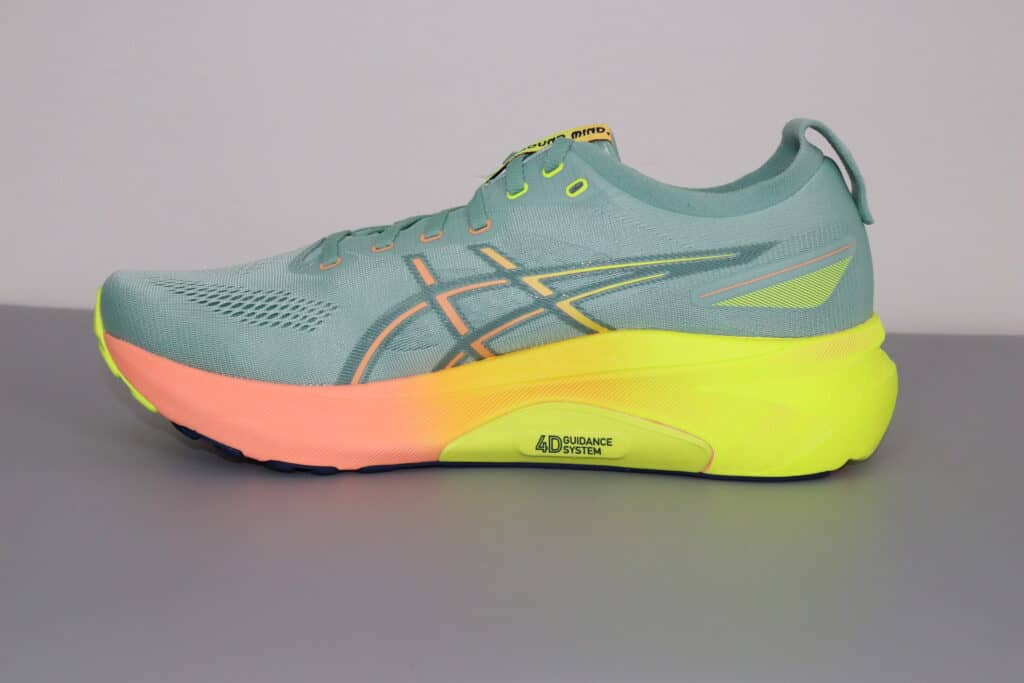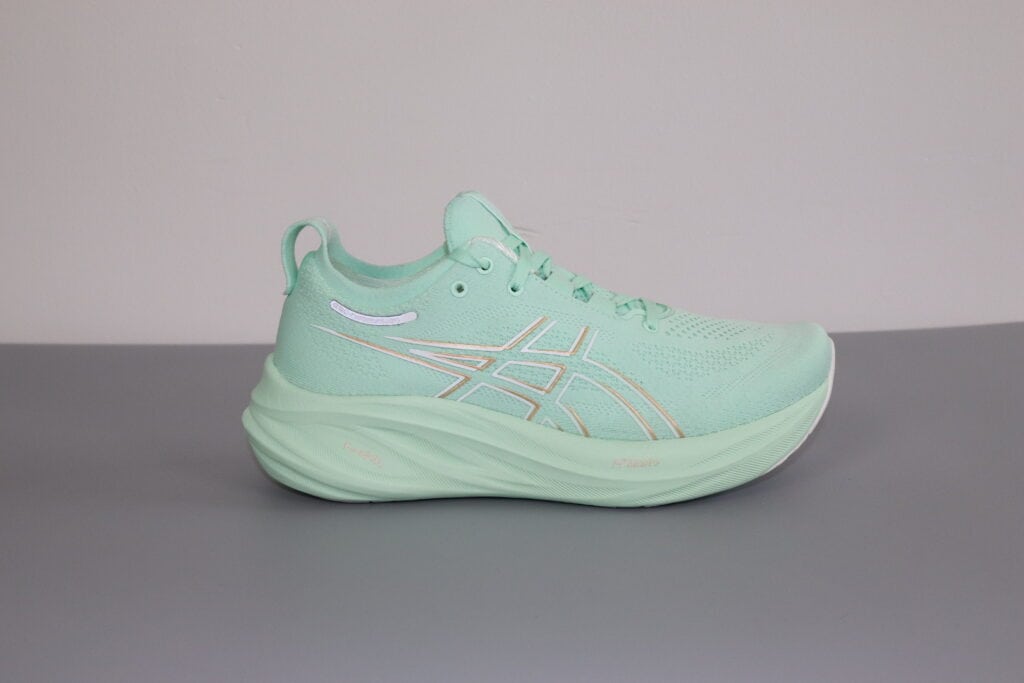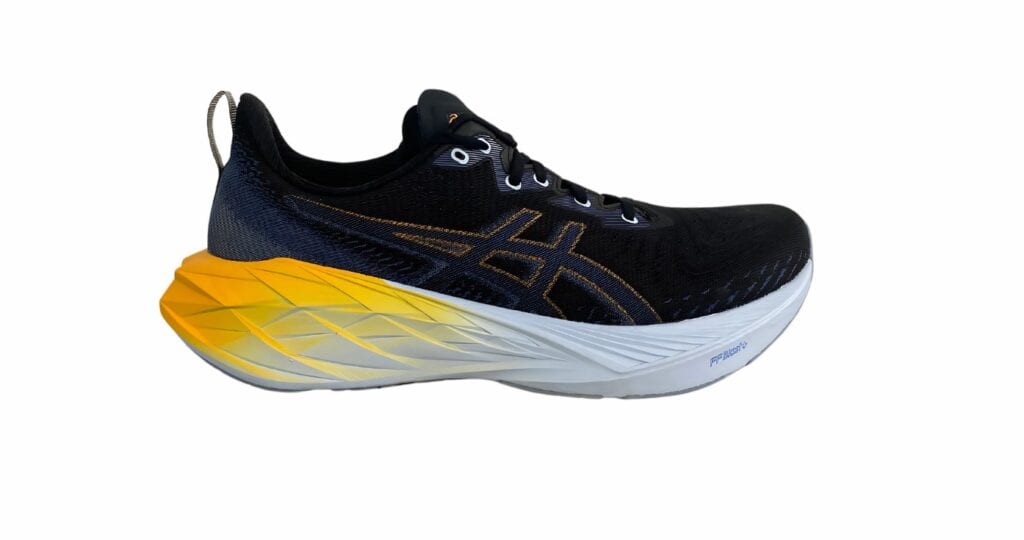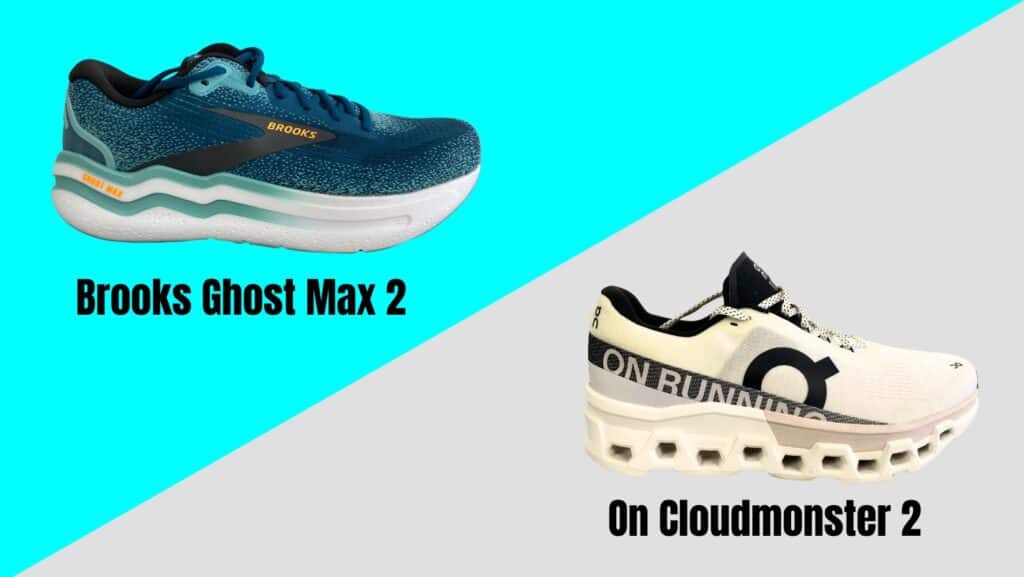When choosing between the Asics Gel-Nimbus 26 and the Asics Gel-Kayano 31, it’s essential to understand how these two models differ. Both shoes are built with Asics’ signature comfort and cushioning, but they cater to distinct needs, offering different levels of stability and performance. As a foot and ankle specialist, I’ll break down these differences to help you choose the ideal model for your activities, whether you’re walking, standing, or running.
Cushioning and Heel Drop
Cushioning is a standout feature for both models, though each offers slightly different levels of support:
- Asics Gel-Nimbus 26: Equipped with 41.5mm of cushioning in the rearfoot and 33.5mm in the forefoot, the Gel-Nimbus has an 8mm drop. This balanced drop provides comfort while reducing pressure on the Achilles tendon, which can help with conditions like Achilles tendonitis. However, higher heel drops can sometimes place pressure on the forefoot, which may be a concern for those with Morton’s neuroma or metatarsalgia.
- Asics Gel-Kayano 31: Featuring 40mm cushioning in the rearfoot and 30mm in the forefoot, the Kayano has a 10mm drop, offering slightly more heel elevation. This can help offload the Achilles, relieving tendon-related pain, while the added forefoot cushioning offers additional comfort for those with forefoot conditions.
Both models use FF Blast+ cushioning with a gel insert, creating a plush, comfortable ride that prioritizes support over speed. Unlike springy models geared toward faster performance, these shoes are designed for comfort and stability.
Stability: Maximum Support with 4D Guidance and GuideRails
While both shoes offer stability features, the Gel-Kayano 31 is designed as a true stability shoe, whereas the Gel-Nimbus 26 provides a more stable neutral experience:
- Asics Gel-Kayano 31: This shoe includes the 4D Guidance System for enhanced stability, which combines several elements:
- Sole flare extends the shoe’s base, creating a broader support platform.
- 4D guidance in the medial arch provides resistance to inward pronation by using resilient cushioning, supporting the foot through each step.
- Sidewalls in the midfoot and rearfoot areas cradle the foot, preventing excessive side-to-side motion and keeping it centered, ideal for maintaining balance on varying surfaces.
- Asics Gel-Nimbus 26: While more neutral, this model also includes some sidewalls and sole flare features to increase stability. Though not as robust as the Kayano, these elements still offer reliable support, making the Nimbus a stable choice for those who prefer a lighter feel without sacrificing too much support.
Buy Shoes on Amazon
Performance: Bevel, Rocker, and Toe Spring
The heel bevel and forefoot rocker in each shoe contribute to smooth transitions and enhanced propulsion, each with slightly different applications:
- Asics Gel-Kayano 31: Features a moderate forefoot rocker and slight toe spring, which helps guide your gait without adding pressure to the toes. This design supports a gradual transition from heel strike to toe-off, making it ideal for steady, long-distance runs and providing a comfortable, stable ride.
- Asics Gel-Nimbus 26: With a slightly more aggressive forefoot rocker and earlier toe spring, the Nimbus enhances push-off by lifting the toes slightly, creating a forward propulsion effect. While helpful for quicker movement, this toe spring may add pressure to the toes, so those with forefoot issues might prefer Kayano’s gentler approach.

Fit and Comfort: Roomy Toe Box and Plush Upper
Both shoes are designed with comfort in mind, but there are some differences in the fit and upper design:
- Asics Gel-Kayano 31: This model has a spacious toe box with a plush, sock-like fit that wraps comfortably around the foot. The upper material is soft yet durable, adding a luxurious feel without compromising stability. It’s ideal for those seeking a snug, comfortable fit that also accommodates wider feet, with options available in normal, wide, and extra-wide widths.
- Asics Gel-Nimbus 26: With a slightly lower volume and narrower toe box, the Nimbus still offers ample room for most foot shapes. Its lightweight upper material feels slightly less plush than the Kayano, focusing more on flexibility and a lighter feel.
Both models feature a gusseted tongue that keeps it in place and adds security. The Gel-Kayano’s tongue is more padded, while the Nimbus has a thinner one, contributing to its lighter construction.
Heel Counter: Stability and Achilles Support
The heel counter in each shoe provides stability, but each model caters to different needs:
- Asics Gel-Kayano 31: With a stiff heel counter, the Kayano limits side-to-side movement, stabilizing the heel and helping to reduce pronation. This feature benefits those needing extra stability, though those with Haglund’s deformity may find the firmness uncomfortable.
- Asics Gel-Nimbus 26: Offers a slightly more flexible heel counter, making it more comfortable for those with heel sensitivities, such as Haglund’s deformity. The flexibility provides comfort without sacrificing too much stability, making it a versatile option.
Buy Shoes on Amazon
Recommended Use: Walking, Standing, Running
- Asics Gel-Kayano 31: With its maximum stability and plush feel, the Gel-Kayano 31 is perfect for long-distance runs, standing, or walking all day. Its cushioning and support make it a top choice for recovery runs or steady, easy-paced runs.
- Asics Gel-Nimbus 26: This model is best suited for those who want a lightweight, stable, neutral shoe for daily use. While it provides enough support for walking and standing, its lighter build makes it a great choice for recovery and easy runs without the full stability of the Kayano.

Conditions Supported by These Shoes
Both models cater to different foot conditions:
- Achilles Tendonitis: Both shoes offer heel drops that can offload the Achilles, but the Gel-Kayano’s softer ride may provide more relief.
- Plantar Fasciitis and Posterior Tibial Tendinitis: With medial support features, both models help control overpronation, relieving stress on the posterior tibial tendon and plantar fascia but the Gel-Kayano 31 is more effective.
- Forefoot Conditions: The added forefoot cushioning in the Kayano benefits conditions like Metatarsalgia and Morton’s neuroma.
Final Thoughts
If you’re looking for a stability shoe with plush comfort and maximum support, the Asics Gel-Kayano 31 is an excellent choice. It’s designed for longer, steady runs, standing, and walking and provides all-day comfort. The Asics Gel-Nimbus 26 offers similar cushioning in a lighter package, making it suitable for those seeking a stable neutral shoe with a softer feel for easy runs, walking, or daily wear.
Check out our other reviews on different Asics stability models for more comparisons or our review on the stability shoes of the year. Feel free to leave any questions in the comments below. Don’t forget to like and subscribe for more in-depth shoe reviews!


